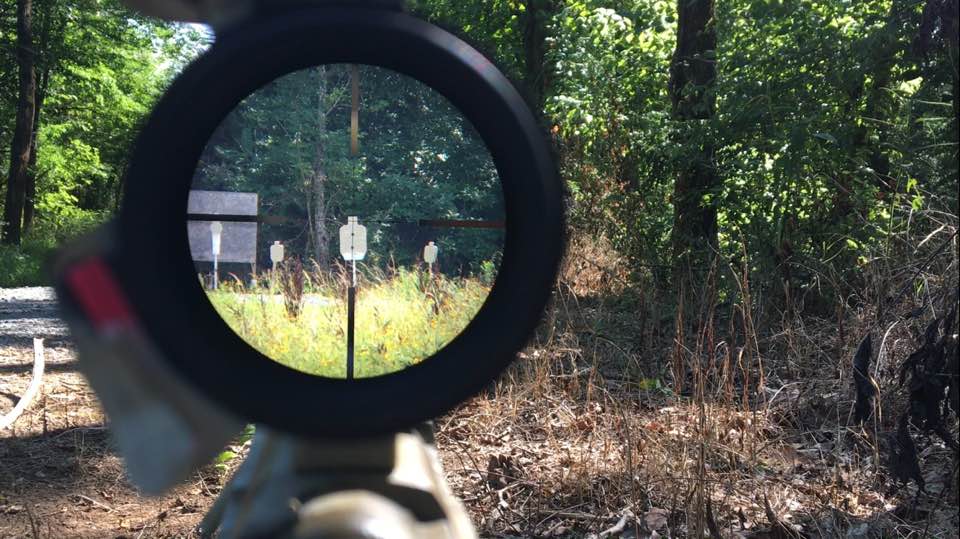Are You Ready? A Path to Capability
By Brett, Former Green Ops Instructors
Green Ops Staff has had the fortunate opportunity to teach thousands of students throughout our collective military, law enforcement, and civilian instructor careers. In the short two years that we have been offering our experience and knowledge to open civilian classes, we have reached at least 500 additional students. To our clients, we say “thank you!”
When we decided to enter the firearms training market, we specifically targeted the skilled defensive practitioner. Our goal was to challenge shooters, to make them give serious consideration to the legality of justified lethal force, and to push to them towards excellence in their defensive skill sets. As our business has grown, we have attended two major NRA events: the Great American Outdoor Show and the Carry Guard Expo. When our instructors who attended these events compared experiences, we learned that there are some gaps in most concealed weapons permit holders’ defensive preparation and readiness.
We determined these gaps from the frequently asked questions we fielded at these seminars. The first frequently asked question we hear is, given a set of circumstances, “can I shoot in self-defense?” Answering that question isn’t a simple yes or no because every encounter is unique, dynamic, and rapidly changing. Every defensive firearms practitioner needs to understand the elements that must be present to be legally justified in using lethal force:
Ability: the means to cause harm.
Opportunity: the positioning that allows for harm to be done.
Intent: manifested through action, specifically action preparatory to causing harm.
Imminent jeopardy: the threat’s capacity to cause harm.
Preclusion: defensive use of force is a last resort to prevent serious physical harm or death.
A solid understanding of these elements is critical to the defensive practitioner. All of these elements will be looked at through the lens of objective reasonableness. Essentially, was the force used necessary and reasonable to prevent harm or death, and would a jury of peers or a judge upon review of the facts also come to a similar conclusion under similar circumstances?
Most people want the answer to this question to be a simple formula, but it rarely works like that. There is good (justified) use of force and there is bad (criminal) use of force. What most people fail to realize is that lines between the two are not definitive and easily recognizable. In many circumstance, decisions that are made to prevent the risk of death or serious physical harm may have to be made in the gray area of imperfect knowledge between just and unjust.
The second question we receive frequently is, “do you carry with a round in the chamber?” The reason behind this question became evident upon hearing our answer “of course,” and the typical response of, “I am afraid I would shoot myself.”
One of the concepts that we teach in our defensive pistol and carbine courses is the concept of immediate accessibility. We define immediate accessibility as “available to be brought from concealment and into action in less than two seconds.” If the defensive firearm cannot be brought into action in less than two seconds it may as well be on the dark side of the moon. Violent encounters are usually unforeseen events perpetrated by criminal actors from a position of advantage. These criminals do not have your value system and certainly do not respect you or have concern for your safety. Being prepared means having immediate access to a reliable and effective firearm.
Most people that ask us the above questions view their defensive firearm quite differently than we do. They view it as a talisman, which is a device that wards away evil. This is a critical error. The gun is not some form of mystical protection. It is only a tool. To be an effective defensive tool it must be carried by a knowledgeable and skilled user in a state of immediate readiness and accessibility.
Now we have addressed the two common questions we get. Let us address the original question of the article, “are you ready?” Are you ready to defend yourself and your loved ones from unforeseen violent criminal assault? Are you carrying your firearm in a state of immediate readiness and accessibility?
If you lack the knowledge, skill, and confidence to carry your firearm in a state of immediate readiness and accessibility, we suggest that you start to develop it as soon as possible. Skill and ability create confidence. Confidence commands respect. Respect or fear of the capable opponent causes many criminal actors to look for easier victims — a desirable outcome for the smart defensive practitioner. If you have chosen to carry a concealed firearm for defense, then your answer to the question, “are you ready?” should be a confident “yes!” If you are not sure if you are ready, please go seek and attend the training to develop your skills and knowledge to make you a capable and confident defensive practitioner.
The path to capability is effective training and disciplined practice blended with a thorough knowledge of the legal aspects of justified lethal force. There is no one trainer that can provide the total package here. Anyone claiming to do so should be your first warning flag. This field of study is diverse and changing. Therefore, if you train, do your research, vet your potential instructors, and practice regularly, you will be walking the path towards capability. Once you adopt a state of immediate readiness and accessibility, carry your gun whenever you legally can.
Those that we have learned from and hold in high regard are: John Benner of Tactical Defense Institute; Tom Givens of Rangemaster; John Murphy of FPF; Paul Howe of CSAT; Spencer Keepers of Keepers Concealment – the man when it comes to appendix carry; Gabe White of Pistol Shooting Solutions; and Ernest Langdon of Langdon Tactical. We at Green Ops continue to be humbled when you choose us to train with, and we encourage you to become a serious student and get on the path to capability.

